Many teenagers spend much of their free time in a virtual world, and the school world can be peripheral to the connections they make through TV or a computer screen. As our society becomes more and more driven by social media, Facebook opens a door to meet students where they are and to create informal educational connections outside of the classroom.
Why did we become history teachers? For me it was because I love exploring this country and its past. I take great joy in visiting museums and historic sites to learn about hidden pieces of our past. I spend time every year experiencing different states and growing my understanding of how geography and regional culture shaped past events and affect politics today.
Unfortunately, all of those verbs—"exploring," "visiting," and "experiencing"—have limitations in the school system, so as teachers we need to look for new and creative tools that are within our reach. Since I began teaching, my students have been on my mind during my adventures, especially those within my own city—Washington, DC. I wish that they could have the experiences that I have, or at least be aware that these experiences exist. It was somewhere along this line of thought that I realized my guilty pleasure, Facebook, could actually be a useful academic tool. I started a project to learn more about Facebook's potential to engage and nurture lifelong historians.
Utilizing Facebook Academically
To preface, this project will be described as an addition to classroom learning. For those John Dewey enthusiasts squeezed out by test prep, Facebook offers an opportunity for your students to explore and engage at will. Rather than mandating participation, the teacher enters the students' world and offers various resources that students may choose to read and interact with. Here are some of the many ways that Facebook can be utilized:
Sharing Visual Aids
My original idea was primarily to utilize Facebook for my visual learners, to help support vocabulary and historic concepts. Images can be found on Google within seconds, but presenting images from your own life provides relevance and tangibility. A smartphone is helpful to upload pictures as you take them and therefore to also model that history is alive and active in your life.
Examples: If we were studying city life during the colonial period and I traveled to Boston, I would upload a photo of a historic building to demonstrate the small windows and brick-laying techniques. As a nature lover in a city school, uploading photos has been especially helpful with geographic terms, such as "marsh" and "plains," that the students are unfamiliar with.
Modeling a Love For History
All of our cities and towns have their own unique history and hidden treasures. While I spend a great deal of time in local parks and museums, my students, like many teenagers, repeatedly tell me that they spend weekends at the movies, sports, or the mall. I do not think this is simply because they are not interested or cannot get to cultural sites, but because it does not occur to them to go. Post a status update saying that you are listening to a presidential address or watching a historical movie. Let them know you are at a museum or just heard a fun fact. Take pictures on a trip when you stumble upon an old cemetery or find a family heirloom. Let the students know when you feel excited about being a history nerd!
Highlighting Current Events
Those less practiced in Facebook may not realize that it can literally be a newsfeed. By clicking to post a "link" instead of "status," you can link your students to any online news source. These could be articles that you think they should all be aware of or articles that may interest a particular group of students.
In addition, any number of politicians, NGOs, and national celebrities have Facebook pages, and this Facebook world is likely not the one that your students pay attention to. If they see that you are "Facebook friends" with Barack Obama and John Boehner, this might prompt them to check both Facebook profiles out and learn more.
Creating Interactive Puzzles
I get the best response when I post interactive puzzles for the students. They can be about anything you are studying or a review throwback to the beginning of the year.
Examples: In the Smithsonian American Art Museum, there is a piece that combines license plates from all 50 states that spell out the words of the Declaration of Independence. I took a quick picture and then posted this up with "Who can tell us what this is?" Several students chimed in.
Questions and puzzles like this can come in many forms, and do not need to relate to museums. For instance, a new movie is coming out called Jumping Over the Broom and I plan to post a link to the movie and ask if anyone remembers the historic significance of this tradition to slave life.
Expanding Student Choices
Most students love activities which involve the computer and social media, and the more we can do to spark interest, the better. There are many ways to use Facebook for turning in assignments or expanding on in-class participation.
Example: When discussing slavery, I asked students what one carries with them when deprived of everything. The students had to go home and look for skills or knowledge that the enslaved could have brought with them across the ocean. They were invited to either bring in items or describe what they had found. As another option, students could post what they found on Facebook. I also posted my own pictures that weekend: a drum, a quilt, and a woven basket to show that the skills brought by the enslaved Africans are seen everywhere.
Giving Shout-Outs and Recognition
Up to this point, you may be able to complete the same goals with a blog—but a unique aspect of Facebook is public recognition. Your teenage students are used to sharing their happiness and sadness and pride across a computer screen so go ahead and jump in! For those wary of causing embarrassment, I recommend sticking to recognizing the whole class. This is fun because it gathers lots of "likes" and revs up the competition.
Building Community
Facebook was designed as an online community and is therefore built to create feelings of belonging. Teachers can share pictures of field trips the students went on, follow along with a topic important to the community, and create special groups relevant to school. Some of my students who are shy in class seem to have a different online personality and are more likely to comment and join in through the computer.
Encouraging a Sense of Ownership and Interest in Our Country
In teaching history, we are passing on ownership of this country, but many students in many cities and towns have not been more than one or two states away. If my Washington, DC students skim pictures of the Oregon coast, Arches National Park, or a New Mexico Indian reservation, my greatest hope would be that the pictures make them want to visit more of our amazing country. Even if they are content where they are, they can at least be more culturally aware and form a broader definition of national diversity.
Ensuring Security and Consent
Securing Privacy
In setting up this project, the first thing to do is to establish a secure Facebook page at www.facebook.com. I recommend the following steps to ensure privacy:
- Separate this account from any other Facebook account that you have.
- Add only the information that you are comfortable with. I added my favorite books, some inspirational quotes, and a few historical movies to my profile. In this account, I also chose to include some pictures of myself and my family and created a couple of photo albums with facts about places I had been.
- Ensure that all of your security settings are set to "Friends Only." This is for the security of the students who "friend" you. It allows only those students who have friended you to have access to your page and your pictures.
- If you do have a personal Facebook account, I recommend double checking that your settings on it are secure before going online with your teacher account. I temporarily switched my personal profile picture to a landscape so that if the students were searching for me, they would select and friend my teacher account, which had a photo of me as the profile picture.
Ensuring Consent
Before just "friending" all of your students, there are a couple necessary steps to take. First, I sought approval from the principal and then I sent a letter home for all of the parents. The parents had to sign the permission slip before any online contact could be established. In this letter, I welcomed the families to join my community on Facebook if they were uncomfortable with their children doing so. Within this letter, I included an additional item about whether I could post pictures of the kids on Facebook. Most parents who agreed to let their children participate in the project agreed to let them participate in all of its aspects.
Project Challenges
Facebook has so much potential for being an educational tool, but I cannot claim I have had full success quite yet. I plan to continue experimenting until this initiative matches the vision that I have for it. Here are some of the challenges I faced.
Encouraging Buy-In
Once everything was set up, then I needed to hook my students. If they did not want to join in, everything was for naught. To present the project to them, I emphasized the "shout-out" portion of the activity and told them that I would offer some project options only on Facebook. I only received about a 40% opt-in rate. On the plus side, the kids who participated were probably the most likely to actually search out the educational articles and pictures that I posted. Next year, I plan to start this project with the beginning of the year paperwork to see if that increases participation.
Creating Routine
It was very difficult for me to create a routine that involved regularly updating my student Facebook account. Facebook is justifiably blocked on my school network so this always had to be an outside-of-work project. Everything I did for the project therefore felt like extra. Next year, I plan to start from the beginning with a commitment to posting biweekly to create more of a routine for myself and the students.
Maintaining Distance
I recommend avoiding skimming your students' pages. There is just information out there that we do not want to know. I requested from the students and in the parent letter that students only allow me access to their Limited Profile, a setting that does not allow me full access to the students' conversations.
Also, be aware that commenting on your students' status may be seen as invasive. I have commented now and then when it was relevant specifically to school or current issues involving social studies or social justice. In my opinion, especially early in the year, teachers may be better off viewing Facebook interaction as one-way.
Facing the Inequity of Computers
Utilizing media outside of the classroom involves inevitable inequities. Since Facebook is blocked at most schools and some students cannot leisurely browse the Internet at home, this project does give some students an unfair advantage. I have not found a way to work around this.
Starting Your Own Projects
I hope that other teachers experiment with this online tool, and would love to hear about any successes or receive feedback. For the first time in history, teachers can reach their students during the after-school at-home hours to build community, provide historic resources, and truly offer the type of engagement that allows us teachers to declare ourselves lifelong learners.
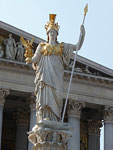

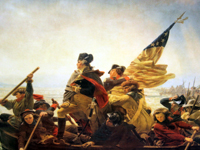
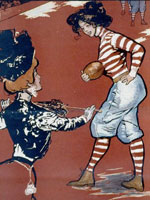

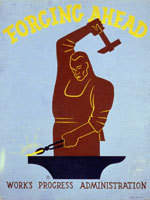
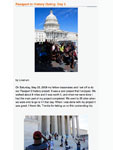
 That same year, an after-school group that is co-sponsored by myself and a friend from the National Park Service took a cross-country trip for Lincoln’s Bicentennial. I created another blog for the students to document their adventures and for friends and family back home to be able to find us. What was nice was that because I had been working with the blog in history class, my students were aware of how a blog works and were familiar with how to write for it and their audience. Each student was required to write three times for the blog during the course of our week-long adventure. Each night after our full day they would write on either paper or share the two laptops we brought for blogging. Before going to bed each night I would upload any remaining blog entries. The system proved effective for sharing our adventures and for students documenting their days. The site has also become a great way for Jen Epstein, my National Park Service co-organizer, to share what she is doing in schools for outreach. View it here:
That same year, an after-school group that is co-sponsored by myself and a friend from the National Park Service took a cross-country trip for Lincoln’s Bicentennial. I created another blog for the students to document their adventures and for friends and family back home to be able to find us. What was nice was that because I had been working with the blog in history class, my students were aware of how a blog works and were familiar with how to write for it and their audience. Each student was required to write three times for the blog during the course of our week-long adventure. Each night after our full day they would write on either paper or share the two laptops we brought for blogging. Before going to bed each night I would upload any remaining blog entries. The system proved effective for sharing our adventures and for students documenting their days. The site has also become a great way for Jen Epstein, my National Park Service co-organizer, to share what she is doing in schools for outreach. View it here: 